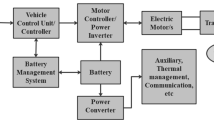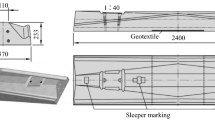Abstract
Studies of magnetic field and magneto-hydro-dynamics are regarded as the foundation for the development of large-scale aluminum reduction cells, while due to the direct relationship between the busbar configuration and magnetic compensation, the actual key content is the configuration of the busbar. As the line current has been increased from 160 kA to 600 kA, the configuration of the busbar was becoming more complex. To summarize and explore the evolution of busbar configuration in aluminum reduction cells, this paper has reviewed various representative large-scale pre-baked aluminum reduction cell busbar structures, such as end-to-end potlines, side-by-side potlines and external compensation current. The advantages and disadvantages in the magnetic distribution or technical specifications have also been introduced separately, especially for the configurations of the mainstream 400-kA potlines. In the end, the development trends of the bus structure configuration were prospected, based on the recent successful applications of super-scale cell busbar structures in China (500–600 kA).








Similar content being viewed by others
References
Y.X. Liu and J. Li, Modern Aluminum Electrolysis (Beijing: Metallurgical Industry Press, 2008).
S.H. Yao and Z.H. He, Light Metals 1990, ed. M.B. Christian (Warrendale, PA: TMS, 1990), pp. 453–458.
T. Tvedt and H.G. Nebell, Light Metals 1988, ed. L.G. Boxall (Warrendale, PA: TMS, 1988), pp. 567–573.
J. Li, W. Liu, Y.Q. Lai, and Y.X. Liu, JOM 60, 58 (2008).
A. Gusev, V. Kriuokovsky, and L. Krylov, Light Metals 2004, ed. A.T. Tabereaux (Charlotte, NC: TMS, 2004), pp. 467–472.
M.F. El-Demerdash, A.A. Adly, S.E. Abu-Shady, and W. Ismail, Light Metals 2000, ed. T.A. Committee and R.D. Peterson (Nashville, TN: TMS, 2000), pp. 291–295.
V. Potocnik, Light Metals 1991, ed. E. Rooy (Warrendale, PA: TMS, 1991), pp. 1187–1193.
M. Dupuis and V. Bojarevics, Light Metals 2006, ed. T.J. Galloway (San Antonio, TX: TMS, 2006), pp. 341–346.
N. Urata, Light Metals 2005, ed. H. Kvande (San Francisco, CA: TMS, 2005), pp. 455–460.
M. Segatz, D. Vogelsang, C. Droste, and P. Baekler, Light Metals 1993, ed. S.K. Das (Denver, CO: TMS, 1993), pp. 361–368.
D. Vogelsang, I. Eick, and M. Segatz, Light Metals 1997, ed. R. Huglen (Warrendale, PA: TMS, 1997), pp. 233–238.
C. Droste, I. Eick, and M. Segatz, Light Metals 2003, ed. P.N. Crepeau (Warrendale, PA: TMS, 2003), pp. 367–371.
O. Martin, B. Allano, E. Barrioz, Y. Caratini, A. Escande, and N. Favel, Light Metals 2012, ed. C.E. Suarez (Orlando, FL: TMS, 2012), pp. 569–574.
Y.X. Liu, X.P. Li, Y.Q. Lai, and J. Li, Chin. J. Nonferrous. Met. 13, 1199 (2003).
J. Antille, U.S. Patent 5830335 (1998).
M. Bugge, M. Koniar, K. Skladan, and M. Stas, Light Metals 2008, ed. D.H. DeYoung (New Orleans, LA: TMS, 2008), pp. 261–265.
W. Schmidt-Hatting and S.H. Wolfgang, U.S. Patent 4224127 (1980).
P. Morel and J.P. Dugois, D.E. Patent 2653643 (1986).
W. Schmidt-Hatting, U.S. Patent 3775281 (1973).
C. Vanvoren, CIM Bull. 95, 96 (2002).
Q.F. Huo, Technology and Equipment of Aluminum Electrolysis Industry (Shenyang: Liaohai Press, 2002) (in Chinese).
R.F. Boivin, J.R. Huni, and V. Potocnik, U.S. Patent 4683047 (1987).
E. Bosshard, O. Knaisch, W. Schmidt-Hatting, and J.M. Blanc, Light Metals 1983, ed. E.M. Adkins (Warrendale, PA: TMS, 1983), pp. 595–605.
E.L. Heaton and W. Porter, U.S. Patent 3415724 (1965).
J.M. Blanc, U.S. Patent 4313811 (1982).
P. Morel and J.P. Dugois, C.A. Patent 1061745 (1979).
M. Keinborg, B. Langon, and J. Chaffy, U.S. Patent 4592821 (1986).
J.M. Gaillard, J.C. de Verdiere, and P. Homsi, U.S. Patent 6551473 (2003).
H.D. Mclellan and W.K. Armour, U.S. Patent 3616317 (1969).
V. Pingin and V. Platonov. U.S. Patent 20080041718(A1) (2008).
C.H. Yang, F.Y. Yan, T.T. Zhou, and X.T Han, China Patent 200510200741.5 (2006) (in Chinese).
X.D. Yang, Y.F. Liu, D.F. Zhou, G.Z. Wang, Z.Y. Zou, Y.D. Yang, K.J. Sun, Y. Qiu, and J.M. Zhu, China Patent 200810229097.8 (2010) (in Chinese).
D.X. Lv, Y.W. Wu, X.W. Qi, S.X. Ma, J.H. Mao, H. Dong, D.Q. Wang, J.X. Liu, N. Mao, and Y.J. Guan, U.S. Patent 20110067999(A1) (2010).
J. Li, Y. Xu, H.L. Zhang, and Y. Lai, Int. J. Multiph. Flow 37, 46 (2010).
M. Dupuis, V. Bojarevics, and J. Freilbergs, Light Metals 2004, ed. A.T. Tabereaux (Charlotte, NC: TMS, 2004), pp. 453–459.
M. Li and J.M. Zhou, J. Cent. South Univ. (Sci. Technol.) 15, 2 (2008).
M. Li and J.M. Zhou, Light Metals 2008, ed. D.H. DeYoung (New Orleans, LA: TMS, 2008), pp. 271–275.
W. Liu, D.F. Zhou, Y.F. Liu, M. Liu, and X.D. Yang, Light Metals 2015, ed. M. Hyland (Orlando, FL: TMS, 2015), pp. 479–482.
D.F. Zhou, X.D. Yang, M. Liu, and W. Liu, Light Metals 2015, ed. M. Hyland (Orlando, FL: TMS, 2015), pp. 483–487.
B.L. Gao, Light Metal Age (2016), pp. 29–33.
Acknowledgements
This study was supported by the National Science Foundation of China (51574289, 61533020 and 51674300), the Project of Innovation-driven Plan in Central South University (2015CXS017).
Author information
Authors and Affiliations
Corresponding author
Rights and permissions
About this article
Cite this article
Zhang, H., Liang, J., Li, J. et al. Evolution of the Busbar Structure in Large-Scale Aluminum Reduction Cells. JOM 69, 307–314 (2017). https://doi.org/10.1007/s11837-016-2148-y
Received:
Accepted:
Published:
Issue Date:
DOI: https://doi.org/10.1007/s11837-016-2148-y




